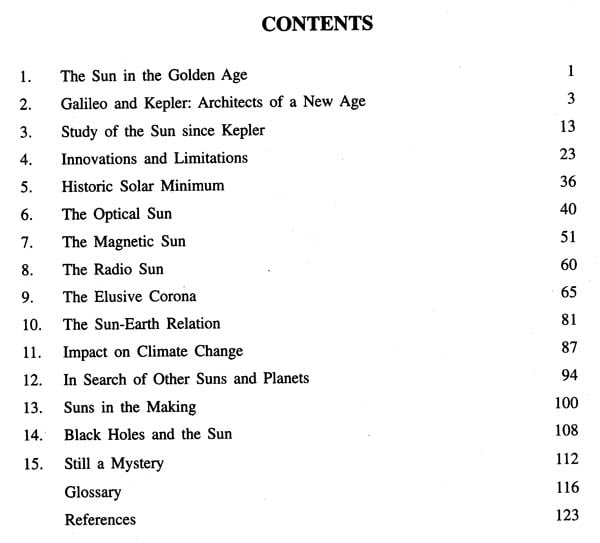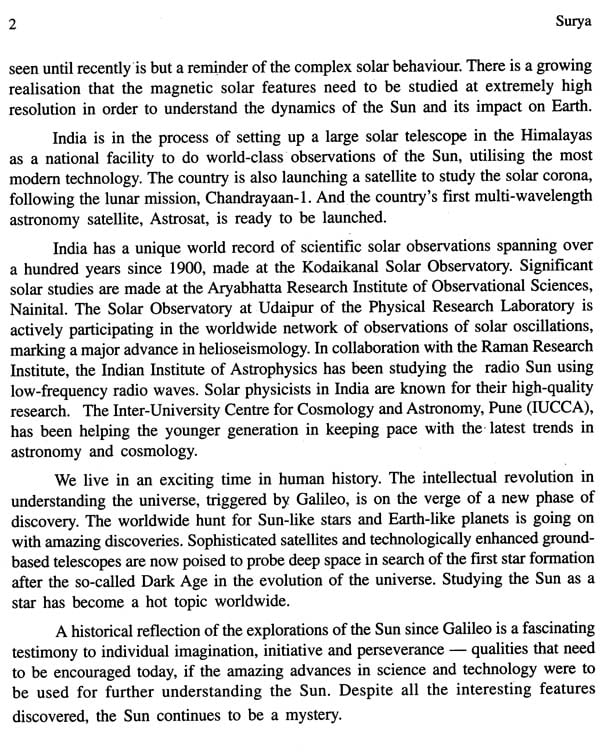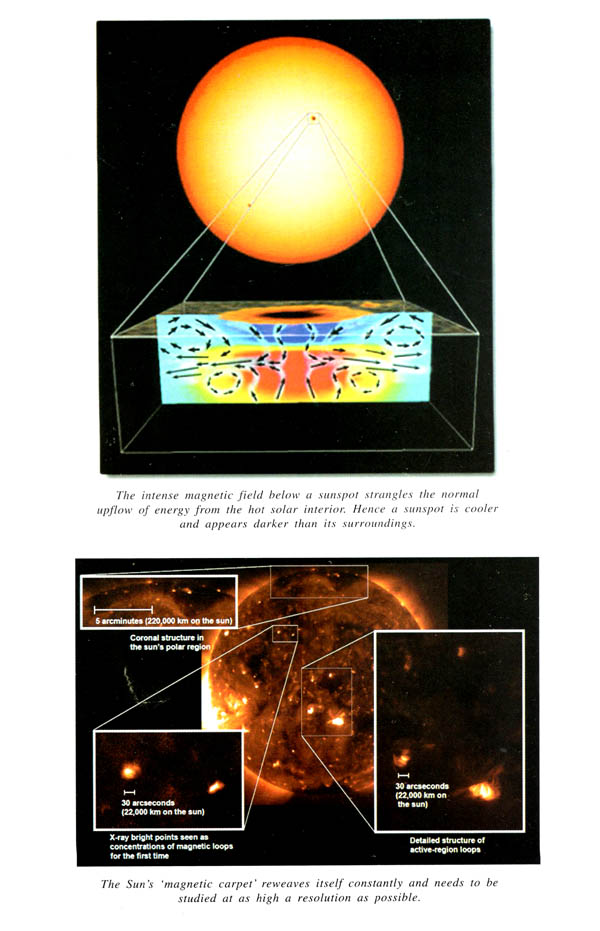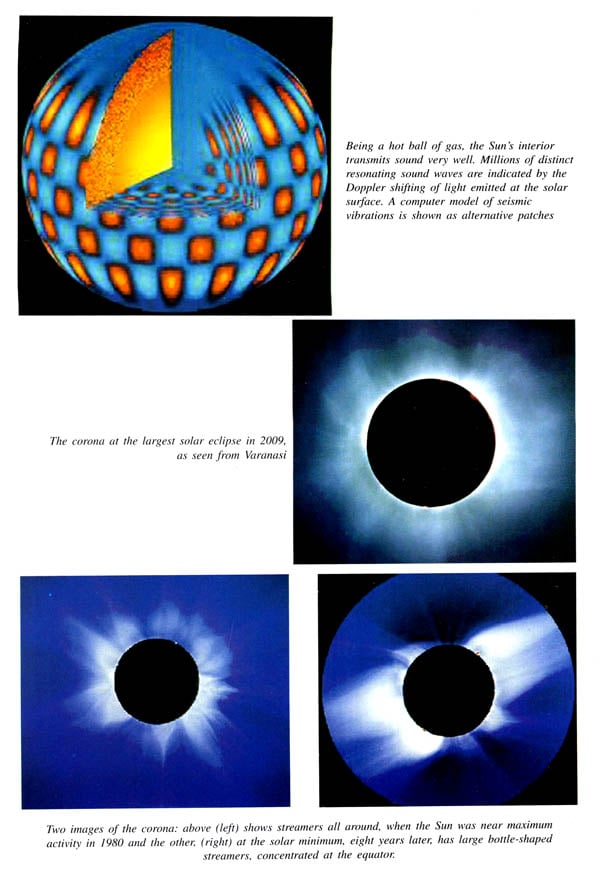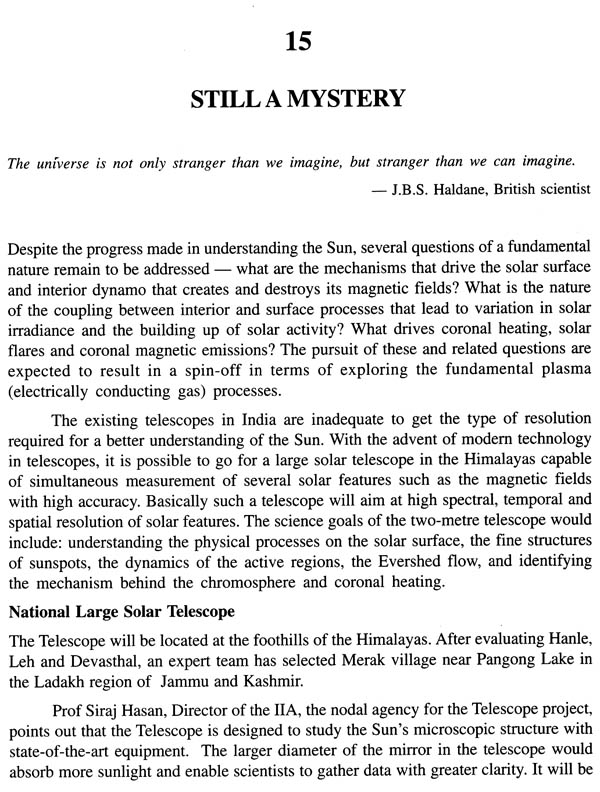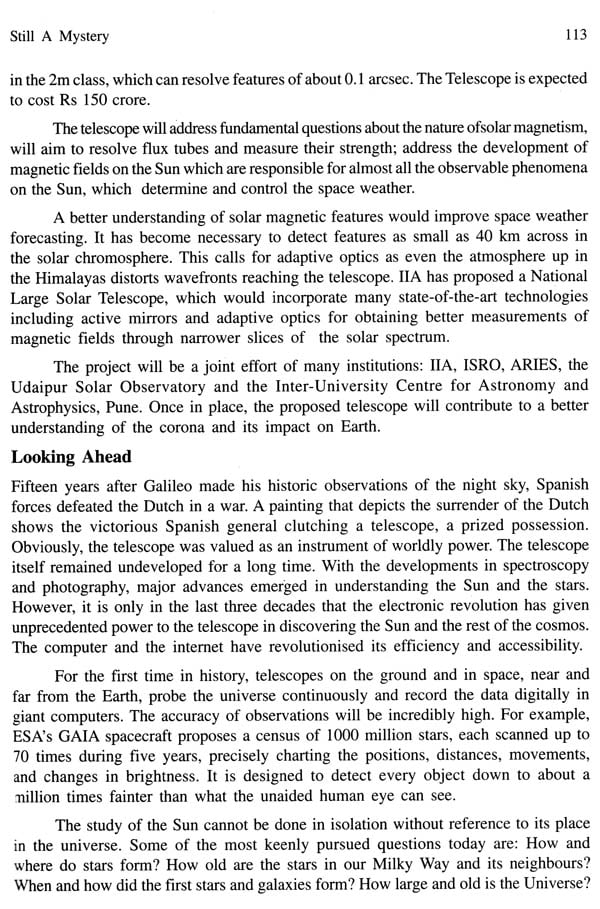
Surya (Solar Explorations Since Galileo)
Book Specification
| Item Code: | NAV497 |
| Author: | Mohan Sundara Rajan |
| Publisher: | Publications Division of Ministry of Information and Broadcasting |
| Language: | English |
| Edition: | 2012 |
| ISBN: | 9788123016795 |
| Pages: | 124 (Throughout B/W 14 Colored Illustrations ) |
| Cover: | PAPERBACK |
| Other Details | 9.50 X 7.00 inch |
| Weight | 270 gm |
Book Description
Facts about the sun are astonishing. People through-the ages have-been_fascinated by ‘its amazing properties. With state-of-the-art equipment, -scientists. are now able -to study various solar events and its radio, optical and magnetic properties. The. book explains these phenomena as it takes us through the time-line of solar explorations in India as well. as the world. It also recounts real life stories of scientists who. stood by their discoveries against prevailing" beliefs and dogmas. Anecdotes related to solar observations and-explorations make the book an: interestingread.. The author is a well known science writer several books on space and astronomy oh Credit. He is a recipient of the Soviet Land Nehru Award and several other awards for outstanding efforts in popular science communication.
The advances made in understanding the Sun since Galileo make a fascinating story. This book tells the story beginning with an account of the contribution of Galileo and Kepler in ushering in a new age of discovery of the cosmos, breaking away from centuries of prejudice and ignorance. The story reviews the role of numerous outstanding individuals who, with simple technology, unveiled some of the basic features of the Sun in all these years since Galileo. It also covers an overview of the application of increasingly sophisticated technology in enhancing the power and range of telescopes and detector techniques.
The story then turns to the delayed Solar Minimum experienced recently and describes the study of the Sun from India related to its optical, magnetic and radio features. Worldwide discoveries in these fields are explained. The Sun-Earth relation in the wake of the latest satellite-based discoveries of the Earth’s magnetic envelope is an important component of the book. The impact of the Sun on the Earth’s climate change is analysed to highlight the need to cut down the emission of greenhouse gases.
The story goes on to describe the ongoing search for Sun-like stars and Earth- like planets as well as the latest explorations aimed at demystifying the time and manner of the birth of the first stars. The narrative examines the role of black holes in galaxy formation, and describes the search for dark matter and dark energy that may ultimately govern all cosmic phenomena.
Lastly, the book explains the rationale for a large solar telescope in India, as the Sun is still a mystery and a better understanding of its activities would be of great practical value, besides being an attractive avenue for exploration by our younger generation.
I am grateful to Professor Siraj Hasan, Director of the Indian Institute of Astrophysics (IIA) and well-known solar astronomer; Dr. Harish Bhatt, Dean of IIA, Professor Ram Sagar, Director, Aryabhatta Research Institute of Observational Sciences (ARIES), Nainital; Dr Ravi Subrahmanyan, Director, Raman Research Institute (RR); and their distinguished colleagues for their valuable time in talking to me on the work of their institutions.
I thank Professor P.C. Agrawal, ISRO Chair, and Principal Investigator, ASTROSAT; Professor S. N. Tandon of the Inter University Centre for Astronomy and Astrophysics; Dr P. Venkitakrishnan, Director of the Udaipur Solar Observatory; and Professor Govind Swarup, distinguished radio astronomer, for sending me valuable notes.
I also acknowledge the encouragement given to me by Professor U.R.Rao, Dr K. Kasturirangan and Dr G. Madhavan Nair, former Chairmen, ISRO and their distinguished successor, Dr K. Radhakrishnan and Dr M.Y.S. Prasad, Associate Director, Satish Dhawan Space Centre Sriharikota and their colleagues; Professor B.V. Sreekantan, Honorary Professor, National Institute of Advanced Studies, Bangalore; Professor Ramanath Cowsik and Dr J.C. Bhattacharyya, former Directors of IIA.
I also thank Dr A. Ramachandran, former Under Secretary-General, United Nations Habitat, Dr. Smt. K. Meena, Vice Chancellor, Bharathidasan University Tiruchi; Dr. N. Rajendran, Dean Faculty of Arts, also of Bharthidasan University and Dr P. Iyamperumal, Executive Director, Tamilnadu Science and Technology Centre, Chennai.
I benefited from the articles written in Current Science by Dr S. Shylaja of the Jawaharlal Nehru Planetarium, Bangalore-and Mr R. Balasubramaniam (IIT, Kanpur) on the Indian temple architecture and traditional land measurements, respectively.
I thank Mr K.T. Rajan, Staff Officer, ITA; Mr S. Satish, Director, Public Relations, ISRO: and reviewers of the initial draft (who wish to remain anonymous) for their assistance.
I thank Shri. K. Ganeshan Director General, Publications Division of the Ministry of Information and Broadcasting, Government of India and his colleagues, Mr Rajesh K. Jha, Director and Ms R. Anuradha, Editor for bringing out this book in time.
I wish to acknowledge with thanks the support of ITA, RRI, ARIES, PRL, ISRO, IUCCA and the National Centre for Radio Astronomy for permission to use some of the illustrations pertaining to their work.
